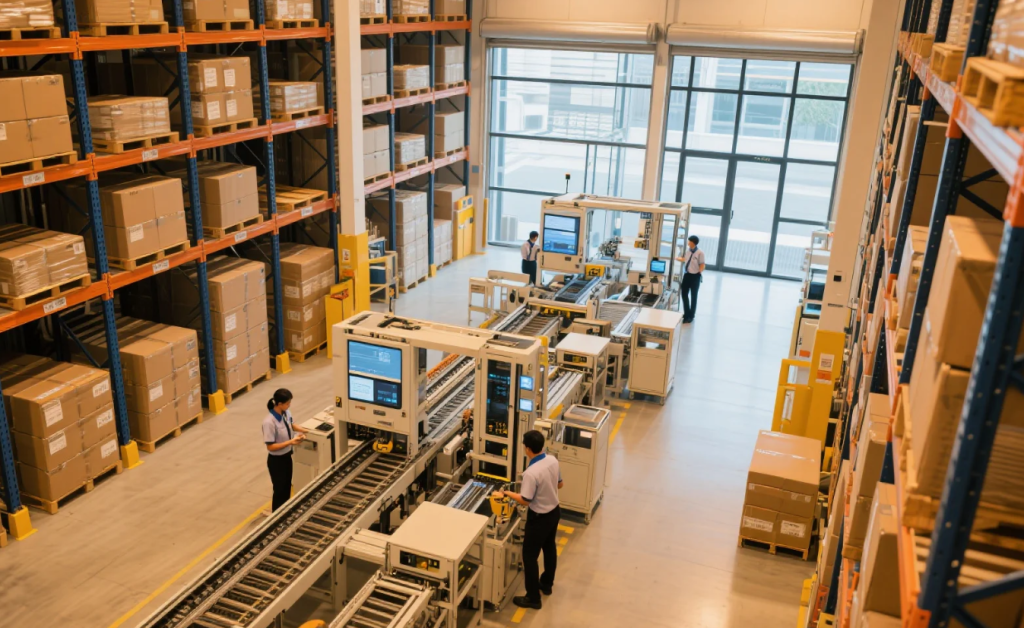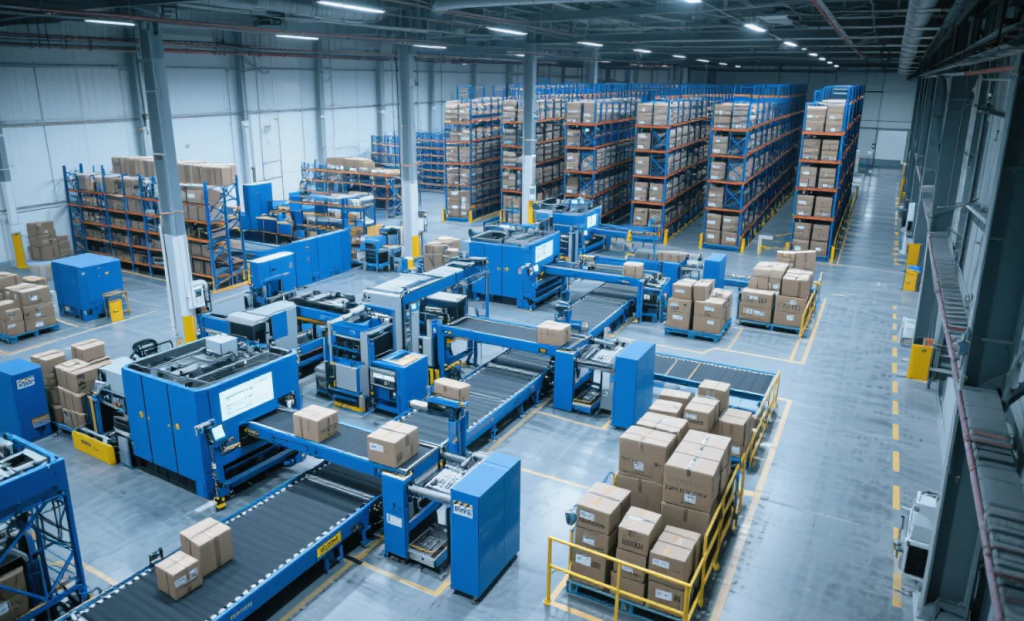What Makes a Good Warehouse for E-Commerce and Logistics in 2025 | Malaysia Insights
Introduction
In the year 2025, the function of warehouses has significantly transcended their traditional role of mere storage. Warehousing now acts as a fundamental facilitator of contemporary e-commerce and logistics operations, offering the essential infrastructure required for swift, adaptable, and dependable order fulfillment. As companies vie for success in a high-demand, customer-focused global market, the warehouse has transformed into a vital strategic asset—incorporating automation, data intelligence, and sustainable practices to align with evolving expectations.
The rapid increase in online shopping, the emergence of cross-border trade, and the ongoing demand for quicker delivery times have driven a reimagining of warehouse design and functionality. This article delineates the key attributes that characterize a high-performance warehouse in 2025—emphasizing operational efficiency, technological integration, environmental stewardship, and future scalability.

1. Automation and Operational Efficiency
Contemporary warehouses utilize automation to enhance workflows, minimize manual labor, and boost throughput. Autonomous mobile robots (AMRs), automated storage and retrieval systems (AS/RS), and collaborative robotics are extensively implemented to assist in picking, sorting, packing, and inventory management tasks.
These technologies greatly enhance operational speed while decreasing human error. In environments with high volume, automation has become crucial not only for achieving fulfillment objectives but also for guaranteeing consistency and cost management. Furthermore, collaborative technologies aid in streamlining labor-intensive processes while ensuring a safe working environment for human operators.
2. Integrated Digital Systems
A high-performing warehouse functions on a completely integrated digital framework. Cloud-based Warehouse Management Systems (WMS) offer real-time insights into inventory levels, order statuses, and distribution activities. These systems are linked to e-commerce platforms, transport management software, and supplier networks to enable seamless data interchange.
This degree of integration allows for omnichannel fulfillment, dynamic order routing, and agile supply chain planning. It also facilitates the tracking of key performance indicators such as pick rates, stock turnover, and shipment accuracy—ensuring ongoing operational optimization.
3. Scalability and Modular Design
Warehouse designs in 2025 emphasize adaptability. Facilities are built with modular configurations that can be swiftly modified to suit different product categories, storage capacities, and fulfillment strategies. This adaptability is especially crucial for operations that handle both business-to-business (B2B) and business-to-consumer (B2C) distribution.
4. Strategic Location and Accessibility
The effectiveness of a warehouse is significantly determined by its geographical position. Closeness to major transport routes—like highways, ports, and airports—is vital for reducing transit durations and enhancing last-mile delivery efficiency. In Malaysia, industrial areas with direct access to logistics corridors (for instance, Port Klang, KLIA, North-South Expressway) are increasingly favored for new projects.
Location planning must also take into account the availability of the workforce, connectivity to essential customer demographics, and access to ancillary services such as customs processing, cold chain logistics, and courier facilities.
5. Environmental Sustainability and Operational Resilience
Sustainability has emerged as a fundamental necessity in warehouse development, influenced by escalating operational expenses, environmental regulations, and the worldwide transition towards responsible supply chains. By 2025, a high-performance warehouse will integrate environmentally efficient systems, including LED lighting equipped with motion sensors, rooftop solar energy generation, and intelligent HVAC controls to reduce energy usage. Rainwater harvesting systems and water-efficient fixtures play a significant role in resource conservation, especially in large facilities that include sanitation or office functions. Developers are increasingly pursuing green certifications such as GreenRE or GBI in Malaysia, not only to fulfill compliance requirements but also to boost long-term asset value and attract tenants who prioritize ESG considerations. These sustainable attributes not only mitigate environmental impact but also enhance resilience, decrease utility expenses, and align the facility with the changing global and local demands for responsible industrial infrastructure.

6. Data Security and Supply Chain Transparency
As warehouse operations increasingly embrace digitalization, concerns regarding data integrity and cybersecurity are on the rise. High-performing facilities adopt sophisticated access controls, encrypted data transmissions, and tools for supply chain visibility to safeguard sensitive information and ensure compliance with regulations.
Technologies such as blockchain and tamper-proof digital ledgers are being investigated to improve traceability and authentication—especially in sectors where the integrity, origin, or expiration of products is paramount.
7. Reverse Logistics and Returns Handling
The surge in online shopping has resulted in a significant increase in return volumes. Consequently, an effective reverse logistics process is crucial for warehouse operations. Designated return areas, efficient restocking procedures, and automated inspection systems facilitate the swift and accurate management of returned inventory. Warehouses that enable efficient returns processing not only enhance customer satisfaction but also protect inventory value and reduce waste.
8. Workforce Optimization and Safety
In spite of the rise of automation, human labor continues to be indispensable. A well-structured warehouse fosters safety, productivity, and employee wellbeing. This encompasses ergonomic workstations, clearly defined traffic pathways, real-time communication systems, and adequate ventilation.
Workforce management tools driven by artificial intelligence enable precise labor forecasting, task distribution, and performance monitoring. These systems assist in minimizing inefficiencies, managing shift workloads, and enhancing response times during peak operational periods.
Conclusion
In the current fast-paced and intensely competitive logistics environment, the warehouse has evolved into a crucial strategic asset—much more than merely a storage space. A high-performing warehouse in 2025 is characterized by its capacity to incorporate automation, digital technologies, and sustainable infrastructure to meet intricate fulfillment requirements with speed, precision, and adaptability. From modular designs and cutting-edge robotics to real-time inventory tracking and ESG-compliant architecture, every element of the contemporary warehouse is designed for efficiency, resilience, and enduring value.
As Malaysia strives to establish itself as a regional logistics center, companies that invest in future-ready warehousing will be better positioned to cater to both local and global markets. Whether facilitating e-commerce, manufacturing, or cross-border trade, the appropriate warehouse facility empowers organizations to optimize operations, manage costs, and confidently meet increasing customer demands. Choosing or developing a warehouse that aligns with these principles is not merely a tactical choice—it is an essential aspect of sustainable business growth.
If you’re ready to explore industrial properties in Selangor or need expert guidance in selecting the right title for your business needs, our team is here to support you—from land title verification to site selection, planning, and documentation.

